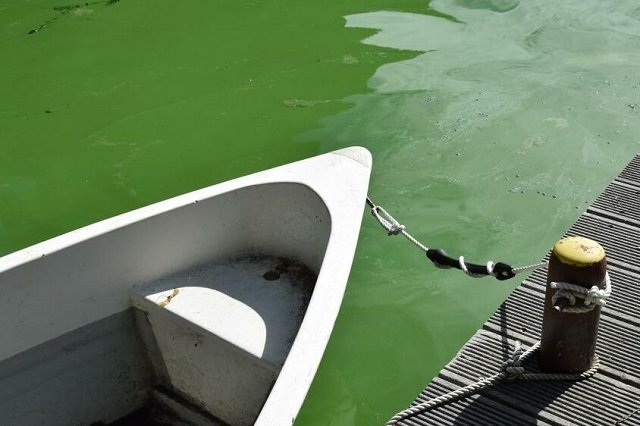
Cyanobacteria can rapidly multiply in freshwater and form algal blooms when favorable conditions prevail. However, cyanobacterial blooms in aquaculture ponds are dangerous for aquatic organisms because some species can produce toxic secondary metabolites.
In this regard, it is crucial for aquaculturists to identify the drivers and develop methods to predict cyanobacterial blooms in aquaculture ponds.
Researchers from Henan Normal University, Griffith University, Zhengzhou Customs Technical Centre, and Observation and Research Station on Water Ecosystem in Danjiangkou Reservoir of Henan Province analyzed monitoring data from 331 aquaculture ponds in China and applied them to two machine learning models (LASSO and RF) to predict cyanobacterial abundance by identifying key drivers.
Machine Learning Models
Machine learning models are popular statistical models that have been used to predict cyanobacterial concentrations in natural waters.
Although various studies have shown that machine learning models are feasible for predicting cyanobacteria, the requirements of long-term monitoring data, inaccessible data, and model complexity make it difficult for aquaculturists to use them to predict cyanobacteria in aquaculture ponds.
Based on the needs of aquaculture pond management, two machine learning models have been developed: the Least Absolute Shrinkage and Selection Operator (LASSO) model and the Random Forest (RF) model to predict cyanobacterial abundance.
Data Collection
The researchers monitored 331 aquaculture ponds from 80 aquaculture farms located in Henan Province in central China.
The farms produce 12 different species, including channel catfish, common carp, herbivorous carp, silver carp, vannamei shrimp, and turtles.
Stay Always Informed
Join our communities to instantly receive the most important news, reports, and analysis from the aquaculture industry.
Additionally, the researchers recorded water quality parameter data such as temperature, alkalinity, hardness, pH, electrical conductivity, nitrogen compounds, chemical oxygen demand (COD), among others.
Feasibility of the Models
The development of cyanobacterial blooms primarily depends on the physical, chemical, and biological properties of water bodies, and fluctuations in abundance are a complex function of external forces and internal processes.
According to the researchers, a key difference between natural waters and aquaculture pond waters is that nitrogen and phosphorus concentrations in aquaculture ponds are artificially added through feeds.
“The simulation results demonstrated that both machine learning models are feasible for predicting cyanobacterial abundance in aquaculture ponds,” they reported.
Furthermore, they highlighted that both statistical models found phosphorus and nitrogen to be modest predictors, while chemical oxygen demand (COD) and total organic carbon (TOC) had the highest absolute coefficients in the LASSO model and the highest scores in the RF model.
According to the researchers, aquaculturists with well-equipped ponds that have abundant water quality monitoring data can use the nine environmental variables identified by the LASSO model.
For aquaculture ponds with limited data, the three environmental variables identified by the RF model provide a convenient solution for useful cyanobacteria prediction.
“Our findings revealed that chemical oxygen demand (COD) and total organic carbon (TOC) were the two most important predictors in both models, highlighting that the concentration of organic carbon is closely related to cyanobacterial growth and the management of aquaculture ponds,” they reported.
Conclusion
The researchers suggest that monitoring organic carbon, along with reducing phosphorus content in feeds, can be an effective management approach to prevent cyanobacterial blooms and maintain a healthy ecological state in aquaculture ponds.
“Our study constructed two machine learning models (LASSO and RF) to predict cyanobacterial abundance in over 300 aquaculture ponds in central China,” they emphasized.
The researchers concluded that both models showed good performance but were found to have different strengths for future applications.
The study was funded by the China Agriculture Research System, National Natural Science Foundation of China, and Major Public Welfare Projects in Henan Province.
Contact
Xuejun Li
College of Fisheries, Henan Normal University, Xinxiang 453007, PR China.
Dirección actual: 46 Muye Road, Xinxiang city, Henan Province 453007
Email: xjli@htu.cn
Reference (open access)
Man Zhang, Yiguang Zhang, Songyan Yu, Yunni Gao, Jing Dong, Weixia Zhu, Xianfeng Wang, Xuejun Li, Juntao Li, Jiandong Xiong. 2023. Two machine learning approaches for predicting cyanobacteria abundance in aquaculture ponds. Ecotoxicology and Environmental Safety, Volume 258, 2023, 114944, ISSN 0147-6513, https://doi.org/10.1016/j.ecoenv.2023.114944.
Editor at the digital magazine AquaHoy. He holds a degree in Aquaculture Biology from the National University of Santa (UNS) and a Master’s degree in Science and Innovation Management from the Polytechnic University of Valencia, with postgraduate diplomas in Business Innovation and Innovation Management. He possesses extensive experience in the aquaculture and fisheries sector, having led the Fisheries Innovation Unit of the National Program for Innovation in Fisheries and Aquaculture (PNIPA). He has served as a senior consultant in technology watch, an innovation project formulator and advisor, and a lecturer at UNS. He is a member of the Peruvian College of Biologists and was recognized by the World Aquaculture Society (WAS) in 2016 for his contribution to aquaculture.




